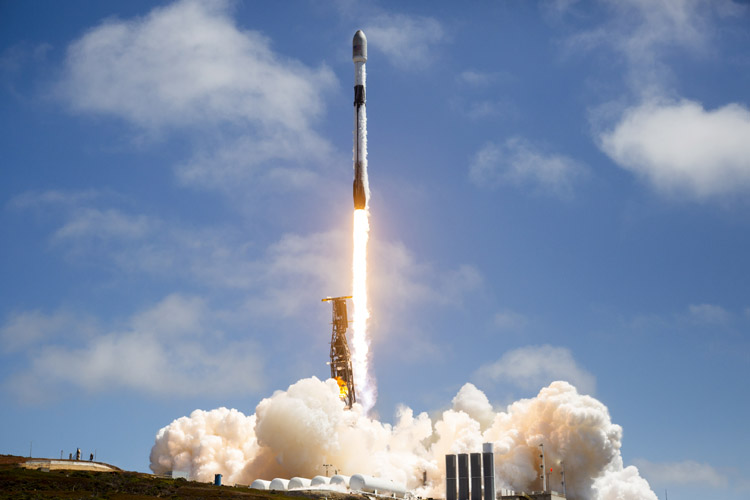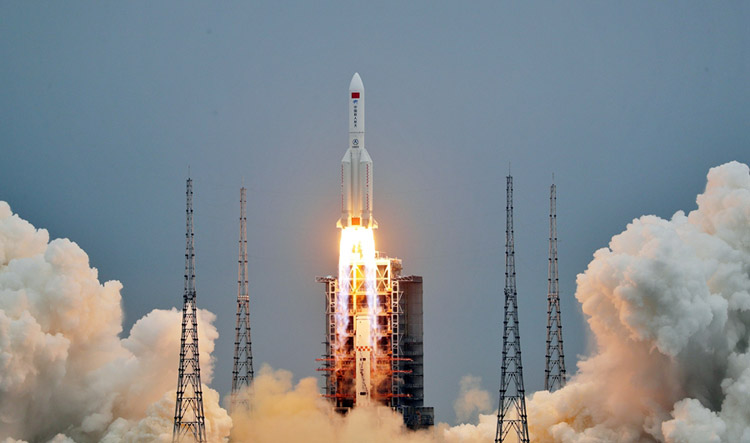INDIAN ARMED FORCES CHIEFS ON OUR RELENTLESS AND FOCUSED PUBLISHING EFFORTS

The insightful articles, inspiring narrations and analytical perspectives presented by the Editorial Team, establish an alluring connect with the reader. My compliments and best wishes to SP Guide Publications.

"Over the past 60 years, the growth of SP Guide Publications has mirrored the rising stature of Indian Navy. Its well-researched and informative magazines on Defence and Aerospace sector have served to shape an educated opinion of our military personnel, policy makers and the public alike. I wish SP's Publication team continued success, fair winds and following seas in all future endeavour!"

Since, its inception in 1964, SP Guide Publications has consistently demonstrated commitment to high-quality journalism in the aerospace and defence sectors, earning a well-deserved reputation as Asia's largest media house in this domain. I wish SP Guide Publications continued success in its pursuit of excellence.
- Operation Sindoor: Resolute yet Restrained
- India’s Operation Sindoor Sends a Clear Message to Terror and the World – ‘ZERO TOLERANCE’
- Japan and India set forth a defence cooperation consultancy framework, talks on tank and jet engines
- Terrorist Attack in Pahalgam in Kashmir: Unfolding a long surgical war against PAK
- Lt General Pratik Sharma takes over Command of Indian Army's Northern Command
Chinese Space Plans
China is creating a giant satellite constellation consisting of thousands of spacecraft for China's state network to cover the entire planet Earth from space. Without doubt it will be for dual civilian-military use or rather primarily for military use.
 |
The Author is Former Director General of Information Systems and A Special Forces Veteran, Indian Army |

According to the ‘State of the Space Industrial Base’ report for 2022 by the US Space Force and US Air Force Research Laboratory, China is working to become the world’s dominant space power economically, diplomatically, and militarily by 2045. The report further states that the US lacks a clear and cohesive long term vision, a grand strategy for space that sustains economic, technological, environmental, social and military (defence) leadership for the next half century and beyond.
Concurrently, the threat assessment released by the Center for Strategic and International Studies’ (CSIS) released in April 2022 says that the US must catch up with Chinese space programme by using more commercial technology and setting long-term, bipartisan policy goals. China has demonstrated an anti-satellite (ASAT) weapon in 2007, ability to rendezvous with other satellites in orbit to disable them, and likely has robust jamming, spoofing, and cyber capabilities. The report says, “While the United States space industrial base remains on an upward trajectory, the upward trajectory of the People's Republic of China is even steeper, with a significant rate of overtake, requiring urgent action.”
In 2020, China announces a ‘New Infrastructure Plan’ merging both satellite constellations into one GW mega constellation of 12,992 satellites to be placed in seven different orbits.
China’s advances in space have been covered in these columns from time to time. The incidents of Chinese spy balloons overflying the US and other countries (India included), their implications and the need for India to produce indigenous balloons of this category was also covered in a recent column. Similarly, the importance of space in the US-led NATO war on Russia using Ukraine as proxy, was also mentioned in these columns; where Starlink satellites of Elon Musk are being used by Ukraine in continuing operations to locate and target Russian forces.

Recent reports indicate that China is creating a giant satellite constellation consisting of thousands of spacecraft for China's state network to cover the entire planet Earth from space. Beijing says this project is being built for peaceful purposes, to provide broadband Internet and communications for the whole world. However, without doubt it will be for dual civilian-military use or rather primarily for military use.
It may be recalled that in 2015, SpaceX had planned to create and launch more than 30,000 satellites in two groups; first network of 4425 Ku-band and Ka-band satellites, and the second network of 7518 V-band satellites. But in October 2019, SpaceX applied to the US Federal Communications Commission for deploying 30,000 second-generation Starlink satellites to operate in orbits from 328 to 614 km high. Since 2018, 3,556 Starlink satellites have already been launched, of which 3,271 are in orbit, in 2022 alone, SpaceX launched more than 1,700 spacecraft into orbit.
The implementation of the GW project will be the most important test of the Chinese space programme
China has now announced the creation of its own GW space mega-group. This announcement was preceded by the following developments:
- In 2016, Chinese Aerospace Science and Technology Corporation (CASC) announced placing 300 satellites in orbit – first 60 by 2022 and all by 2025. It was also planned to establish a factory for producing 300 spacecraft annually.
- In 2017, the CASC announced another similar space project of 156 satellites.
- In 2018, both the above projects launched demonstrator satellites.
- In 2019, the CASC announced that the space constellation would consist of 800 space vehicles.
- In 2020, China announces a ‘New Infrastructure Plan’ merging both satellite constellations into one GW mega constellation of 12,992 satellites to be placed in seven different orbits. GWis an abbreviation for "State Network" in Chinese.
- Subsequently, China Satellite Network Group Co. was established to implement the colossal satellite constellation, consisting of two parts - Hongyan and Hongyun.

In line with the plan for launching GW spacecraft, the first launch of the Chinese "heavy carrier" - the carrier rocket Long March-5B (CZ-5B) is likely in 2023. Earlier, this rocket was mainly used to launch large spacecraft - orbital station modules; model of a new generation of manned spacecraft and an interplanetary Martian mission. However, in Western estimated even if China can launch from 40 to 80 spacecraft in one launch, implementing the overall plan to create a constellation of 13,000 satellites is presumed to be difficult. But then Chinese projects are largely secretive and Beijing has a history of springing surprises.
China and Russia, both of which already have advanced space programmes, may share the Chinese GW mega constellation

The implementation of the GW project will be the most important test of the Chinese space programme; indicating how focused China is to assume the role of a leader in world space exploration. America’s Joe Biden Administration has forced closer China-Russia ties because of its own actions in continuing to fuel the war in Ukraine. The US, therefore, would be concerned that China and Russia, both of which already have advanced space programmes, may share the Chinese GW mega constellation (State Network) although one western view is that China may not allow Russia to share its State Network?
Indian policy makers need to closely examine implications of the above developments on India’s national security. This is all the more important when India is still waking up to the reality of Chinese devices innocuously but systematically spying on India – through electronic devices including CCTV cameras covering strategic locations, leave aside balloons and drones. How China’s State Network will assist China’s allies in anti-India operations is another important issue. Finally, as India aspires to be a global player, it must have its own space network like America’s Starlink and China’s State Network.





